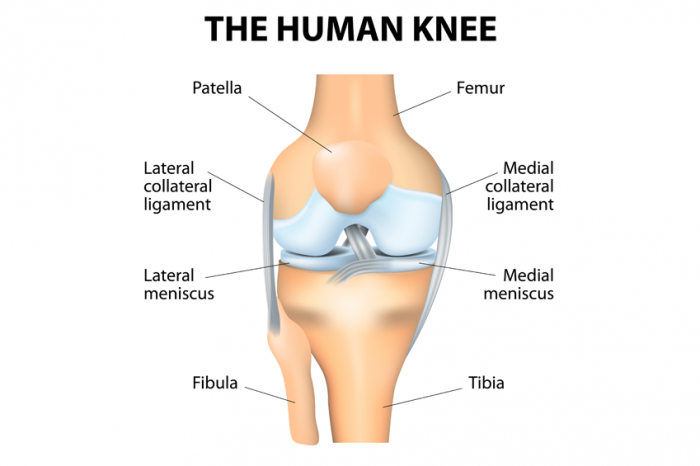 Sports injuries most commonly affect one knee at a time. The knee is one of the largest and most complicated joint in the body.
Sports injuries most commonly affect one knee at a time. The knee is one of the largest and most complicated joint in the body.
Let’s explore basic knee anatomy in order to understand better the origin of a knee problem.
The knee amalgamates with the femur (thigh bone) to the tibia (shin bone). The smaller bone that runs along the tibia and the patella (kneecap) is the rest of the bone that compose the knee joint.
The medial and lateral menisci, two C-shaped pieces of cartilage, are the shock absorbers between the tibia and femur. To help the knee function smoothly, numerous bursae, or fluid-filled sacs do most of the work. The role of holding up your body weight is led by the knee joints, which also controls pressure when you walk, run and jump.
Unfortunately, knee pain is ubiquitous in both the wear and tear of everyday activities and sporting avenues. Knee pain can manifest from sprains, torn or swollen ligaments, meniscus or cartilage tears and runner’s knee.
If there is pain simultaneously in both knees, it can often be a case of arthritis, osteoarthrosis, gout or pseudogout. However, the most common cause of a knee pain can be caused by tendinitis (also tendonitis). Tendinitis is an inflammation of a tendon or tendons. This swelling of the tendons is an overuse injury, where the bands of tissue that connect your bones and muscles swell to a great degree. Often referred to as “jumper’s knee’ as it is common in sports involving jumping such as volleyball.
Please watch the video how the knee pain (possibly tendinitis) is treated using Acupuncture Balance Method in our clinic.

